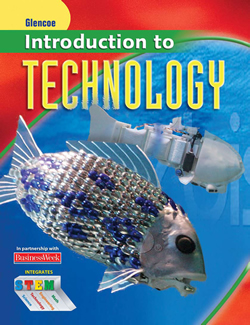
Introduction to TechnologyUnit 7: Transportation TechnologiesWebQuestsIntroduction Advances in technology have made it possible to find ways to study Mars. For example, we have explored with telescopes and space probes. Unmanned spacecraft have landed on the surface to explore and collect data. We have taken photographs of the surface of Mars and analyzed the chemical composition of its atmosphere. During 2003, Mars made its closest approach to Earth in 60,000 years. Because of that, a trip to Mars took about seven months. At other times, a spacecraft could take up to ten months to reach the red planet. To take advantage of this event, both the European Space Agency (ESA) and the National Aeronautics and Space Administration (NASA) sent spacecraft to orbit Mars. Sometime in your lifetime, advances in technology may lead to a human mission to Mars. Why should we explore space? What might the benefits be? Task Process Questions about Missions to Mars 2. Not all Mars missions have succeeded. Name one mission that failed. State the mission goal and date of failure, and explain what went wrong. 3. In 1997, the Pathfinder mission included the Sojourner rover, which explored the surface of Mars. Describe the types of data collected during the Pathfinder mission. 4. What did the findings from the Pathfinder mission suggest about Mars? 5. By December 2003, the ESA's Martian Express was in orbit and began returning images to Earth. Its lander, Beagle 2, did not make contact after it separated from the spacecraft. However, the Martian Express continued to send images and other data. What is the mission for the Martian Express? 6. On January 2, 2005, NASA celebrated the first anniversary of Mars rover Spirit's landing on Mars. Spirit's robotic twin, Opportunity, was also still on the job. Find out the latest news about the rovers. Report your findings. 7. What types of data from the missions launched in 2003 show evidence of water on Mars? 8. Another NASA mission to Mars is the Mars Reconnaissance Orbiter. What are some results of this mission? 9. Is research in space worth the resources used? Take a position for or against space research. Give at least one reason to support your answers. 10. Choose a technology originally developed for space exploration that has affected your life or the life of someone you know. Describe the technology and the effect it has had. Resources Satellites and Robotic Spacecraft This site provides information about space exploration with satellites and robotic spacecraft. For a history of Mars exploration, click on "A History of Unmanned Space Missions." You will find a description of the robotic mission, Mariner 4. Explore Mars This site has useful information about the history of explorations of Mars. In the first menu, select Robotic Missions. Then click on "Past Planetary Missions to Mars." Mars Pathfinder Visit this site to learn about the Mars Pathfinder mission with the Sojourner rover (a remote controlled robot vehicle). The spacecraft carrying the rover landed on July 4, 1997. Find out what the findings from the mission suggested about Mars. Mars Today Go to this site for monthly updates on missions to Mars. The Top Stories area includes news stories about Mars rovers Spirit and Opportunity, as well as the Martian Express spacecraft. ESA: Mars Express Learn about the Mars mission launched by the European Space Agency (ESA) on June 3, 2003. NASA: Spirit and Opportunity Go to this site for the latest news on the Mars rovers Spirit and Opportunity. NASA: One Year on Mars Explore this site to follow the scientific adventures and discoveries of the Mars rovers. NASA: Reconnaissance Orbiter Go to this site for information about this NASA mission to Mars. BBC: Are the Mars missions worth it? Visit this site to learn more about both sides of the debate on funding for missions to Mars. Space Station Science Why do research in space? Go to this site for answers to this question. NASA: How have advances in space technology helped us on Earth? Go to this site for specifics on the technological advances that space study has helped us achieve. NASA: Space Place Go to this site for games and other fun activities related to space exploration. Conclusion |  |















